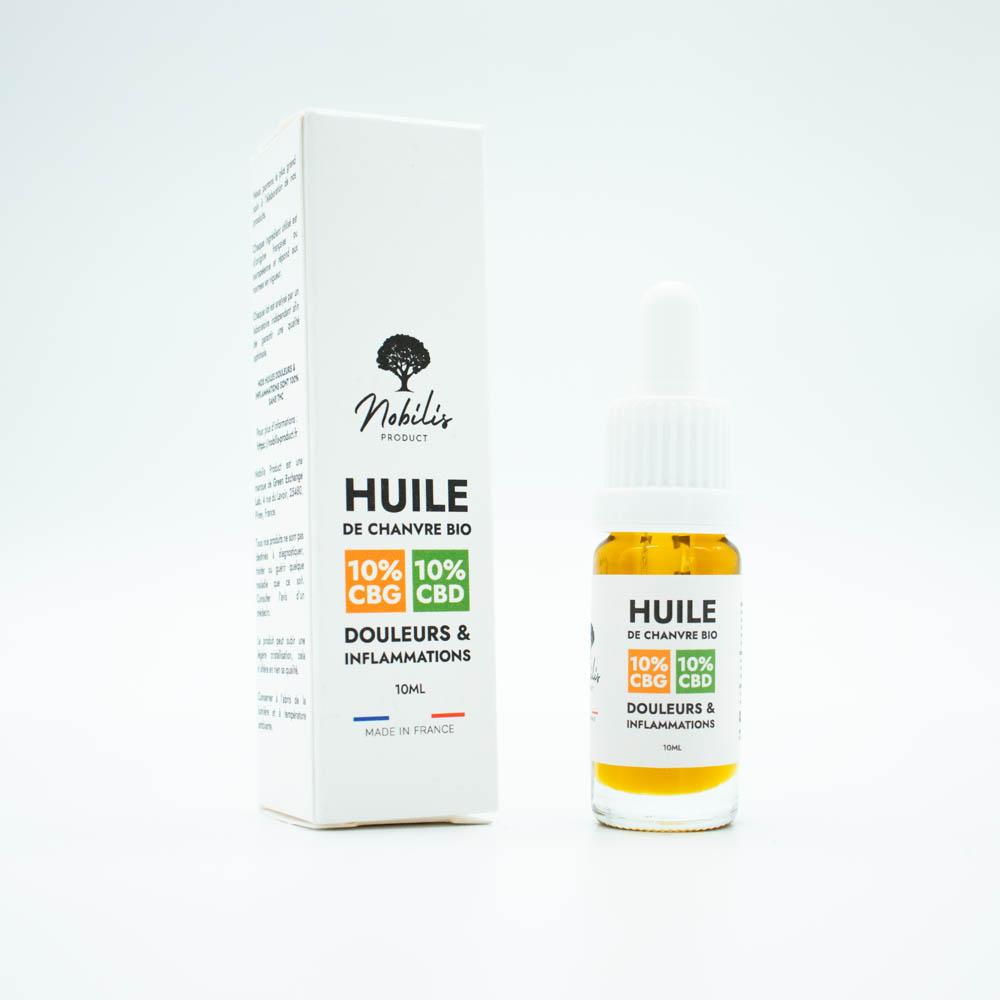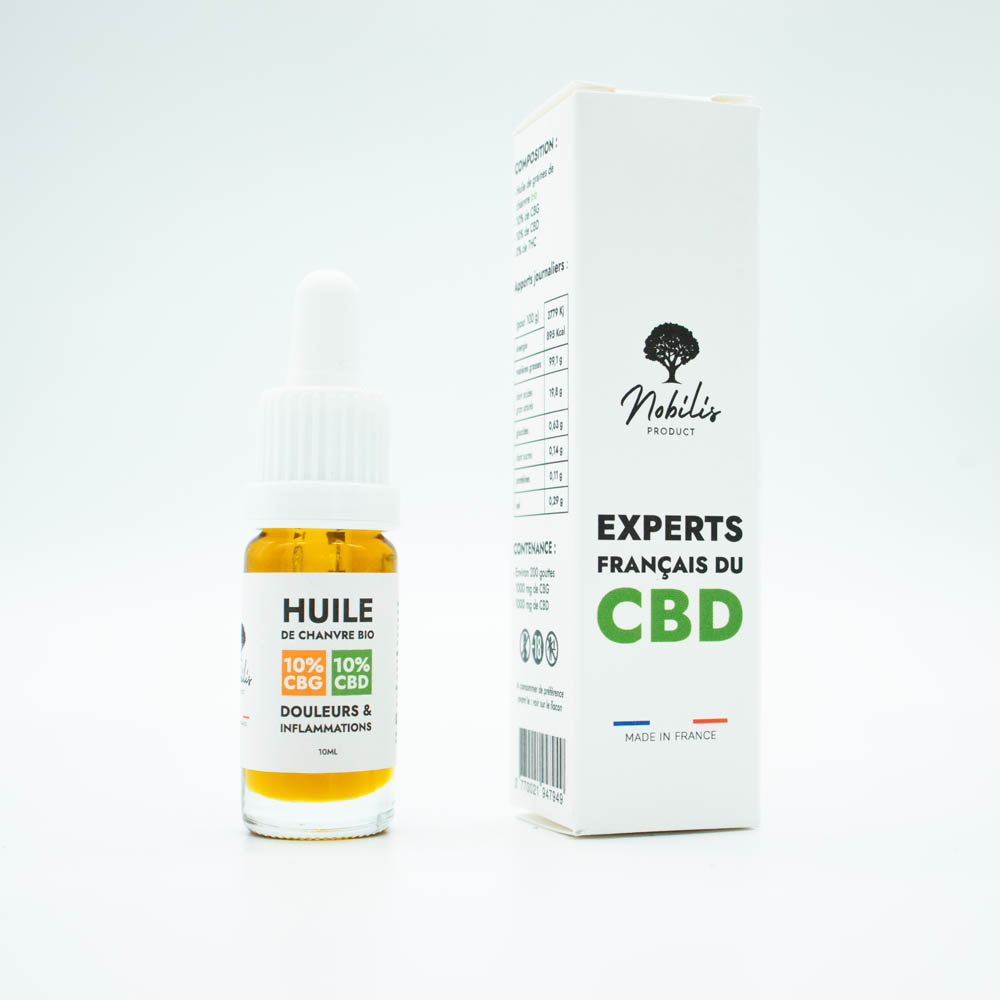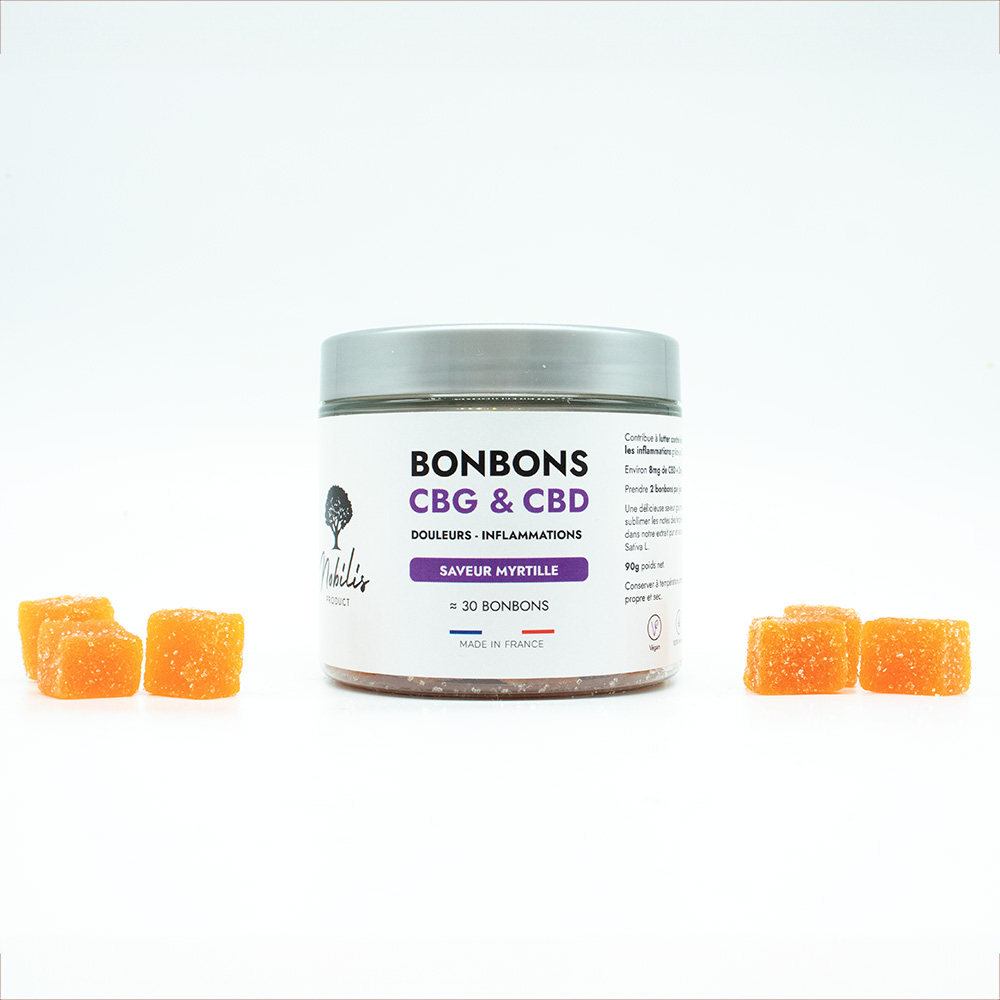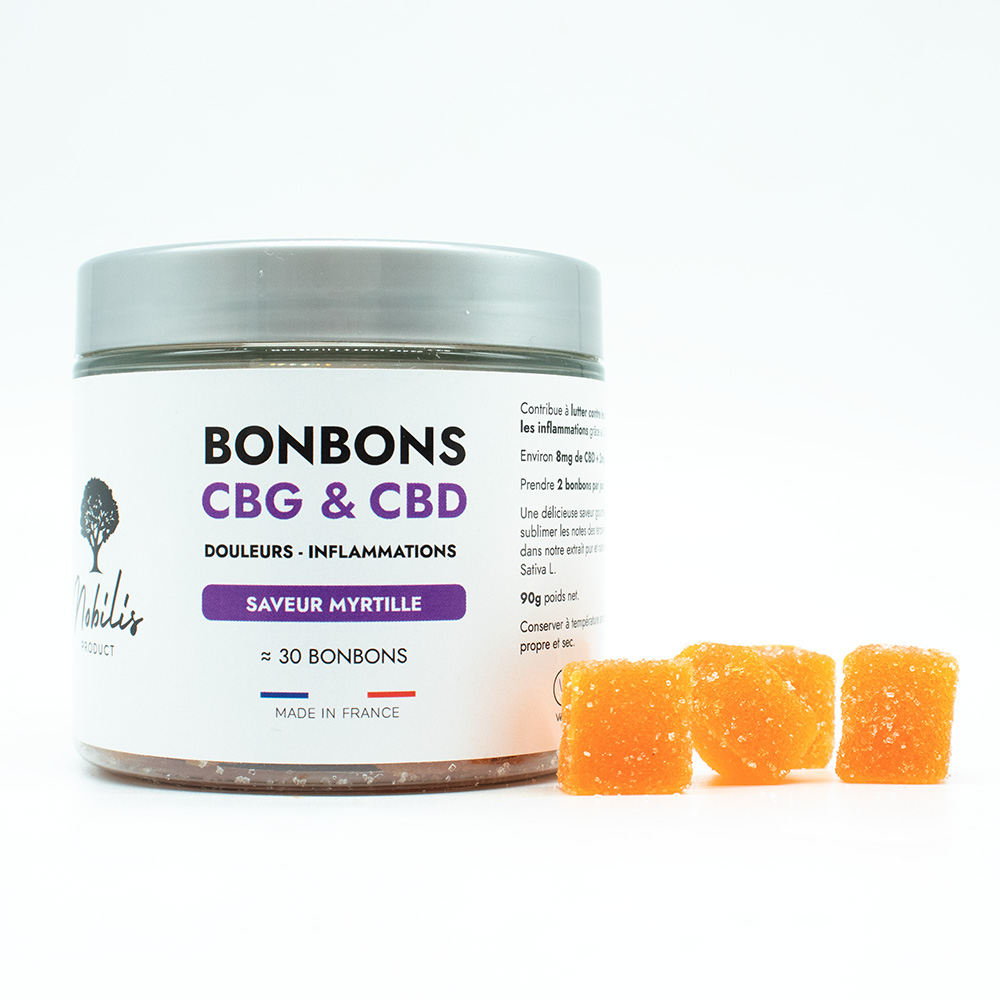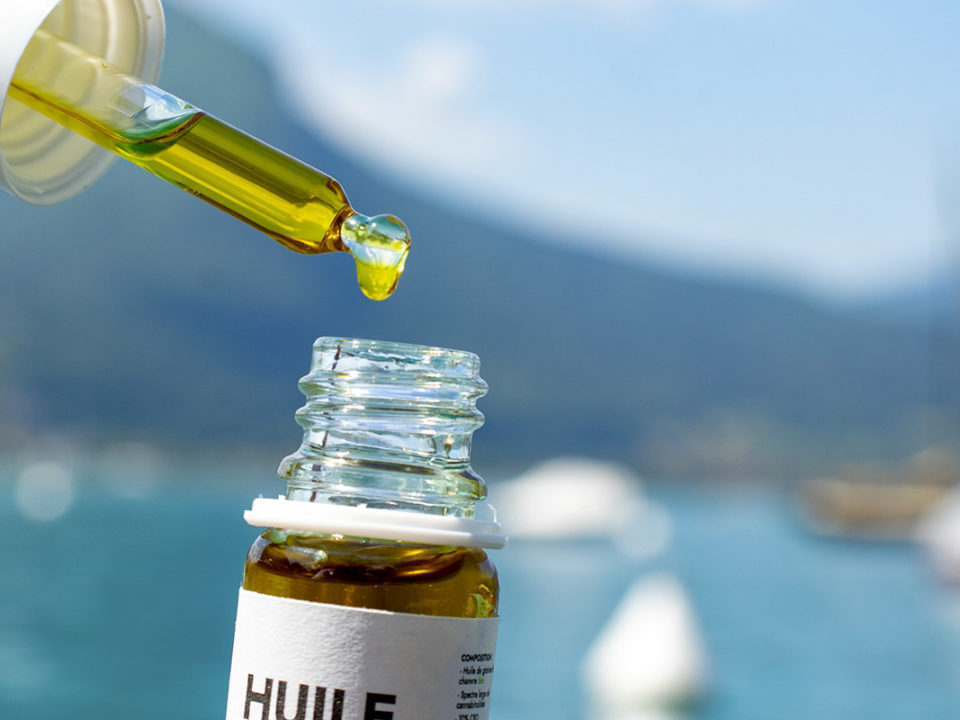
CBD oil and bodybuilding: Does it help muscle growth?
July 6, 2023
How to take CBD: The best ways to use hemp oil effectively
July 7, 2023After the spectacular rise of CBD in the wellness sector, a new natural compound is now attracting attention: CBG, or cannabigerol. Still little known to the general public, this cannabinoid intrigues scientists, health professionals and natural solutions enthusiasts alike.
And with good reason: CBG is often referred to as the precursor cannabinoid, as it is the source of other molecules such as CBD, THC and CBC. Without CBG, the other cannabinoids would not exist.
But beyond this basic role, CBG has its own benefits: it may improve mood, alleviate stress, promote concentration and support certain physiological functions, without causing psychotropic effects. It may also offer definite advantages for those seeking to reduce pain and inflammation.
In this comprehensive guide, we answer the question what is CBG, exploring its origin, mechanism of action, effects on the body, differences from CBD, and the best ways to use it.
Table of contents
What is Cannabigerol (CBG)?
CBG is one of the 113 natural cannabinoids identified in the cannabis plant. Present in small quantities, it is nevertheless fundamental: in its acid form (CBGA), it is the starting point for the synthesis of CBD, THC and CBC.
In industrial hemp plants, CBG is more readily converted to CBD, whereas in therapeutic cannabis varieties, it is more readily metabolized to THC.
CBG, the mother molecule of hemp
It's not for nothing that cannabigerol is considered the mother cannabinoid.All the cannabinoids found in Cannabis plants derive from the acid form of CBG: cannabigerolic acid (CBGA).
CBG is a non-psychoactive substance that shares certain characteristics with CBD and THC, due to its interaction with cannabinoid receptors.
Although CBG doesn't make you high, the molecule is nevertheless likely to slightly impair cognitive abilities, in the same way as delta 8 THC. Following cannabigerol consumption, you may feel more in tune or more focused on what you're doing, without overstimulating your brain.
That's why CBG has become the big news for boosting concentration and productivity among neurohackers, biohackers and other health-conscious consumers.
Numerous studies also credit CBG with benefits for chronic pain andinflammation.
Relationship between CBG, THC and CBD
Industrial hemp and medical cannabis, also known as Marijuana, belong to the same species: Cannabis Sativa L. Although the two plants are somewhat similar, there are significant variations within the same species.
The essential difference between hemp and marijuana lies in their main psychoactive component: the famous THC, or tetrahydrocannabinol. Hemp contains 0.3% or less, which is why hemp-derived products don't contain enough THC to create the "high" traditionally associated with marijuana.
All cannabis plants produce CBG. Here too, however, we distinguish between industrial hemp and therapeutic cannabis, which interact differently with the parent cannabinoid.
In this respect, marijuana plants synthesize more of the enzymes that convert CBG to THC, while hemp has more of the enzymes that convert cannabigerol to CBD.
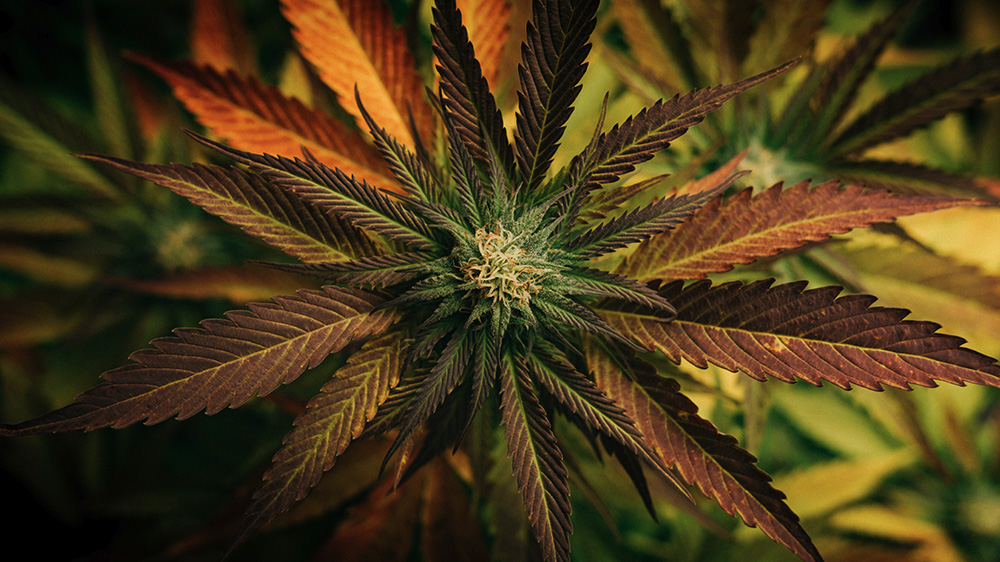
How is CBG extracted?
Although CBG is naturally present in very small quantities in cannabis plants - generally around 1% at harvest, compared with 10 to 20 times more for CBD or THC - it does not enjoy the status of a major cannabinoid.
For a long time, this rarity made its extraction difficult and costly, as large quantities of biomass had to be processed to isolate even a small dose. But with growing interest in its unique properties, things have changed.
Today, new varieties of hemp specially cultivated for their natural richness in CBG are being selected and developed, notably in France. These strains are harvested at a very precise stage of maturity, before the CBG is transformed into other cannabinoids such as CBD or THC, thus optimizing extraction.
This is the method we use at Nobilis Product: we work with responsibly grown CBG flowers of French origin, to guarantee a rich, stable and perfectly traceable raw material. Thanks to these advances, it is now possible to offer CBG-concentrated products that are both effective and more accessible.
What are the effects of CBG on the body?
Like other cannabinoids, CBG acts on the body by interacting with the endocannabinoid system (ECS). This biological system is made up of two types of endocannabinoid receptors and metabolic enzymes present throughout the human body: CB1 and CB2 receptors.
Taken as a whole, the endocannabinoid system helps maintain homeostasis throughout the body. All living beings, with the exception of certain marine life forms, possess an endocannabinoid system - not just human beings.
CBG's action on cannabinoid receptors
CBG acts primarily via the endocannabinoid system (ECS), which regulates the body's homeostasis.
CB1 receptors: present in the brain and nervous system, linked to mood, cognition and perception.
CB2 receptors: located in the immune system and peripheral organs.
CBG binds to both types of receptor, without directly activating them. This gives it a unique action profile, halfway between CBD and THC.
CB1 receptors, found in the central and peripheral nervous systems, bind to neurotransmitters in the brain, while CB2 receptors are mainly found in the immune system and organs.
Cannabigerol binds to both types of cannabinoid receptor without activating them. It is therefore functionally different from THC, which binds to and activates them, and CBD, which does not bind directly to either receptor.
What's the difference between CBG and CBD?
From a molecular point of view, CBG and CBD are quite similar. Both molecules contain exclusively carbon, hydrogen and oxygen - and they have a similar chemical structure.
However, there are significant biological differences between the two compounds.
Here's what you need to know.
1. CBG vs. CBD: Effects and potential benefits
CBG and CBD interact differently with the endocanabionoid system. CBG interacts with CB1 and CB2 receptors, while CBD does not bind directly to them.
This is why CBG and CBD have different pharmacological effects.
Although chemically similar, these two molecules offer distinct effects. CBD is reputed to relieve anxiety, diffuse pain and sleep disorders. CBG, on the other hand, is distinguished by its more targeted action on nerve pain and inflammation, while improving mental clarity.
2. CBG vs. CBD: What medical research says
Clinical studies on CBG are still limited but promising. They suggest its potential in the treatment of :
Intestinal inflammation (Crohn's disease)
Chronic pain
Glaucoma
Cancer
Resistant bacterial infections
Loss of appetite
Bladder disorders
Huntington's disease
CBD, on the other hand, benefits from much more extensive scientific documentation, with solid evidence foranxiety, chronic pain, depression andepilepsy.
3. CBG vs CBD: Availability
This is perhaps the biggest difference between CBG and CBD. Producing CBD requires around 20 times less plant material than producing the same amount of CBG, which is why cannabidiol is cheaper than cannabigerol.
Until there are major advances in CBG production methods, it will never achieve the popularity of CBD.
How to choose your CBG product?
The CBG market is expanding rapidly, and several formats are now available. To choose the right CBG product, here are the essential criteria to consider:
1. Galenic form
Sublingual oil: rapid action and optimal bioavailability
Candies or gummies: ideal for a discreet, gourmet treat
Capsules: precise dosage, easy to integrate into a health routine
CBG flowers: for connoisseurs of vaporization
2. CBG concentration
Choose the right concentration for your needs:
10% for mild daily use
15% for chronic pain or severe cognitive impairment
3. Extract spectrum
CBG isolate: cannabigerol only, no other cannabinoids. Inexpensive but unfortunately not very effective.
Broad Spectrum: CBG + other cannabinoids without THC: A good alternative for enjoying the effectiveness of cannabinoids without THC.
Full Spectrum: CBG + CBD + traces of THC for a complete entourage effect: The best of all solutions.
4. Origin and quality of raw materials
Choose extracts from hemp grown in France or Europe, without pesticides and with guaranteed traceability.
5. The extraction method
The best guarantees of quality are based on methods such asextraction with supercritical CO2 orfood-grade ethanol.
At Nobilis Product, we offer CBG oils and candies made from French flowers, carefully extracted to guarantee purity and efficacy. Our main recommendation for enjoying the benefits is to consumeCBG oil.
At Nobilis-Product, we've designed two CBD oils enriched with CBG. Their formulas are suitable for all needs, especially those suffering from chronic pain.
-
THC-free 10% CBG and 10% CBD "Pain and Inflammation" oil
Rating 5.00 out of 529,90 €10% CBG + 10% CBD oil for lasting relief of chronic pain and inflammation. A synergy of cannabinoids to soothe the body, without addiction or psychotropic effects.
✔️ THC-free, non-addictive
🇫🇷 Made in France with French ingredients in our laboratory
🧪 Total traceability: We extract the active ingredients from Hemp ourselves.
💧 10 ml bottle with dosing pipette - around 250 drops for easy, precise use -
CBD & CBG gummies for Pain and Inflammation
Rating 5.00 out of 514,90 €🍬 Delicious blueberry-flavored candies enriched with CBD and CBG
👀 Anti-pain and anti-inflammatory effect
🌱 Ingredients 100% of natural origin
🇫🇷 French manufacturing
🍁 Dosed with 8mg of CBD and 2mg of CBG per candy
🌿 Questions / Answers about CBG 🌿
1. Is CBG effective against chronic pain?
Yes, CBG could play an interesting role in relieving chronic pain, particularly that of nervous or inflammatory origin. It acts via the CB1 and CB2 receptors of the endocannabinoid system, helping to regulate pain perception.
2. What's the difference between CBD and CBG for pain management?
CBD acts indirectly on the nervous system, with widespread anti-inflammatory effects. CBG, on the other hand, targets neuropathic pain more directly and can act in a complementary way, also bringing greater mental clarity.
3. Can CBG be used to relieve inflammation?
Yes, CBG has anti-inflammatory potential, particularly in the digestive and joint systems. Studies suggest its effectiveness against inflammatory bowel diseases such as colitis and Crohn's disease.
4. What are the side effects of CBG?
CBG is generally well tolerated. It is neither addictive nor psychotropic. Some users may experience mild sedation or increased mental focus, but no serious adverse effects have been reported to date.
5. How should CBG be used to relieve pain?
L' CBG oil oil remains the most effective form for rapid, targeted absorption. CBG candies or capsules are also convenient for regular use. At Nobilis Product, our CBD + CBG oils are formulated for optimum synergistic action against pain. You'll find them in Full Spectrum or Broad Spectrum THC-free formulations.
What is CBG and why try it?
CBG, although present in small quantities in hemp, is a molecule with unique properties that is attracting increasing attention in the world of wellness. Its particular action profile makes it an ally of choice not only for improving concentration and mental clarity, but also for effectively relieving chronic pain and reducing inflammation.
Unlike CBD, CBG acts more directly on certain types of pain, notably those of neuropathic or inflammatory origin, making it particularly interesting for people seeking physical comfort without annoying side effects.
However, CBG remains a rare cannabinoid. It takes almost 20 times more plant material to produce the same amount of CBG as CBD, which explains why CBG-concentrated products are still relatively expensive and less widespread.
Fortunately, thanks to advances in cultivation and extraction methods, it is now possible to find quality CBG oils from French hemp that have been rigorously controlled. Today, this sublingual format remains the most effective and reliable way to enjoy all the benefits of CBG.
Sources and references
LeGuideDuCBD.fr A platform for the popularization of science and advice on natural cannabinoids, the therapeutic uses of hemp and current French legislation.
Green Exchange Lab: French laboratory with expertise in plant extraction and cannabinoid purification, specializing in the traceability and valorization of CBG and CBD from hemp grown in France.


